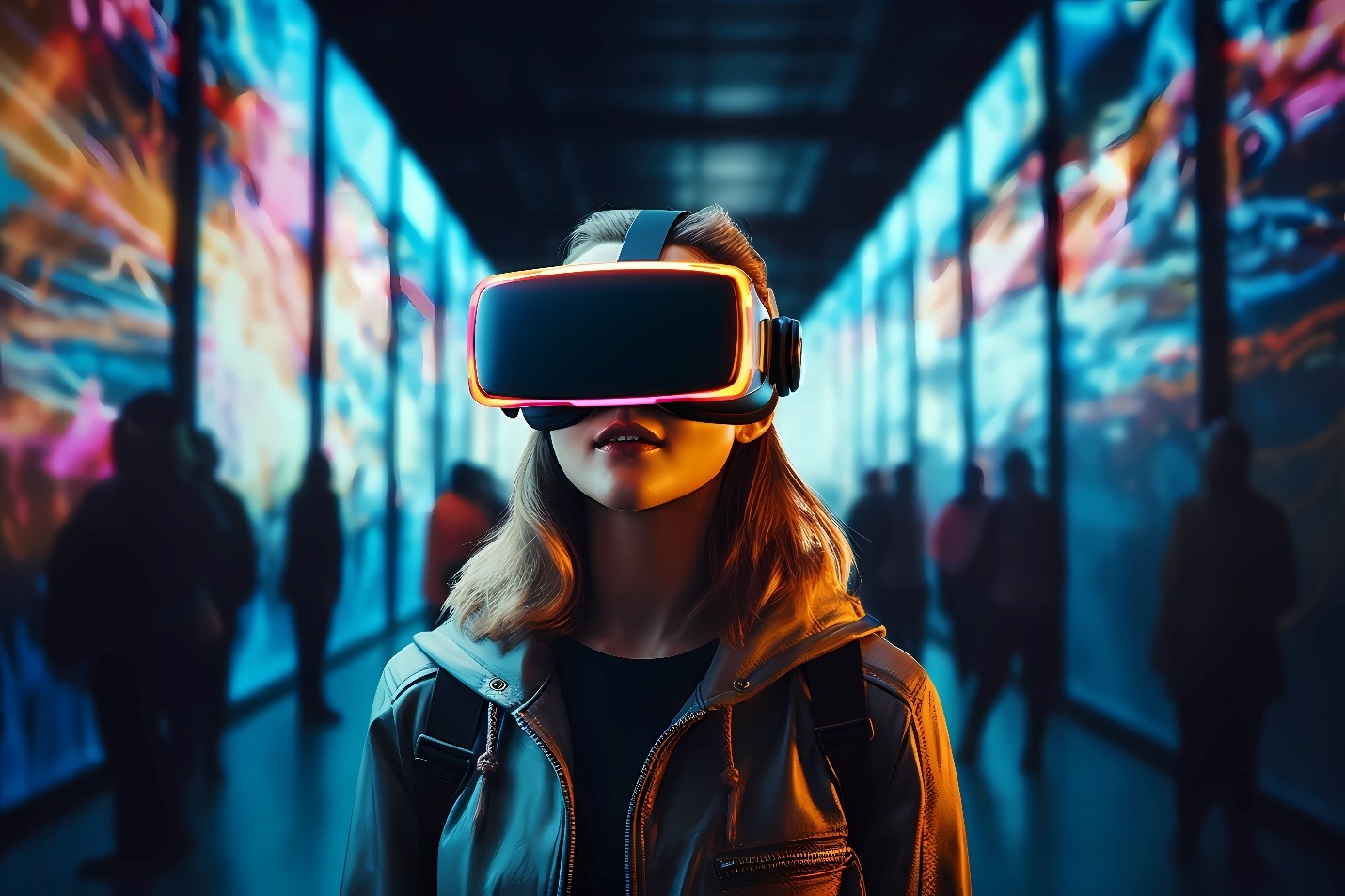Introduction
In recent years, the landscape of entertainment has undergone a significant transformation. The rise of interactive entertainment experiences has revolutionized how audiences engage with content, offering a more immersive, personalized, and engaging form of media. From video games and virtual reality to interactive films and live performances, this evolution is reshaping the way we consume and participate in entertainment. This article delves into the factors driving the rise of interactive entertainment, its various forms, and the implications for the future of media.
Understanding Interactive Entertainment
Interactive entertainment refers to any form of media that requires active participation from the audience. Unlike traditional passive forms of entertainment, such as watching a movie or listening to music, interactive entertainment engages the audience in a dynamic way, allowing them to influence the outcome or experience. This can range from choosing the storyline in an interactive film to controlling characters in a video game or participating in a live, immersive theater performance.
The Evolution of Interactive Entertainment

1. Early Beginnings
The concept of interactive entertainment is not entirely new. Early examples can be traced back to the 1980s with the advent of video games like “Pac-Man” and “Space Invaders.” These games laid the foundation for interactive experiences by allowing players to control characters and influence the game’s outcome.
2. Technological Advancements
The rapid advancement of technology has been a key driver in the evolution of interactive entertainment. The development of sophisticated graphics, powerful processors, and high-speed internet has enabled the creation of more complex and immersive experiences. Virtual reality (VR) and augmented reality (AR) are prime examples of how technology is pushing the boundaries of interactivity.
3. The Rise of Video Games
Video games have been at the forefront of interactive entertainment. From early arcade games to modern console and PC games, the industry has grown exponentially. Games like “The Legend of Zelda,” “Grand Theft Auto,” and “Fortnite” have captivated millions of players worldwide, offering rich narratives, expansive worlds, and multiplayer experiences.
4. Interactive Films and TV Shows
The integration of interactivity into films and TV shows has gained traction in recent years. Platforms like Netflix have experimented with interactive content, such as “Black Mirror: Bandersnatch,” where viewers make choices that affect the storyline. This trend is expanding, with more content creators exploring the potential of interactive storytelling.
5. Live and Immersive Performances
Interactive entertainment is not limited to digital media. Live performances and immersive theater experiences have also embraced interactivity. Productions like “Sleep No More” and “The Great Gatsby” invite audiences to explore and interact with the performance environment, creating a unique and personalized experience.
Expanding Opportunities in Interactive Media
Interactive entertainment has grown beyond video games into a variety of media, from TV shows to live performances. Interactive TV shows like Netflix’s Black Mirror: Bandersnatch allow viewers to control the narrative, offering multiple outcomes based on their choices. This not only enhances viewer engagement but also adds replay value as audiences explore different plotlines. Similarly, live performances and concerts now incorporate audience interaction, giving attendees a direct influence on the experience, blending entertainment with participation.
Types of Interactive Entertainment Experiences

1. Video Games: The Pioneer of Interactivity
Video games remain at the forefront of interactive entertainment. With developments in graphics, artificial intelligence (AI), and game design, modern video games offer complex narratives and open worlds that evolve based on player choices. Titles like “The Witcher 3” and “Red Dead Redemption 2” showcase how video games have become narrative-driven, immersive experiences where players’ decisions significantly impact the storyline.
2. Interactive TV Shows and Films
In recent years, platforms like Netflix have explored interactive storytelling through shows like “Black Mirror: Bandersnatch” and “Unbreakable Kimmy Schmidt: Kimmy vs. the Reverend.” These choose-your-own-adventure-style experiences give viewers control over characters’ decisions, leading to different plotlines and outcomes. This level of interactivity brings audiences deeper into the story, creating a personalized viewing experience.
3. Virtual Reality (VR) and Augmented Reality (AR)
VR and AR have pushed the boundaries of interactive entertainment, offering fully immersive experiences where users feel as though they are part of the virtual world. VR platforms like Oculus Rift and PlayStation VR allow users to interact with digital environments, while AR games like “Pokémon Go” blend the real world with digital enhancements. These technologies provide an unprecedented level of engagement, making entertainment more tactile and immersive.
4. Live Performances and Interactive Theater
Live performances have also embraced interactivity, with immersive theater productions like “Sleep No More” and interactive concerts where audiences can influence the performance in real time. These experiences remove the fourth wall, allowing spectators to become participants and shape the narrative through their choices.
The Role of Technology in Interactive Experiences
Technological advancements have played a crucial role in the rise of interactive entertainment. Virtual Reality (VR) and Augmented Reality (AR) have introduced new levels of immersion, where users can physically interact with digital environments or overlay virtual objects in the real world. These innovations are redefining traditional entertainment, offering personalized experiences that adapt in real time based on user input. As these technologies become more accessible, their impact on storytelling, gaming, and live events will continue to grow.
Key Elements of Interactive Entertainment

1. Immersion
Immersion is a crucial element of interactive entertainment. It involves creating a sense of presence and engagement, making the audience feel like they are part of the experience. VR and AR technologies have significantly enhanced immersion by providing a 360-degree view and interactive environments.
2. Agency
Agency refers to the ability of the audience to make choices and influence the outcome of the experience. This element is essential in video games and interactive films, where players’ decisions can lead to different storylines and endings.
3. Personalization
Personalization is another key aspect of interactive entertainment. By tailoring the experience to individual preferences and behaviors, creators can enhance engagement and satisfaction. This can be achieved through adaptive storytelling, customizable characters, and user-generated content.
4. Collaboration
Many interactive experiences incorporate collaboration, allowing multiple participants to interact and work together. Multiplayer games, social VR experiences, and live performances often rely on collaboration to create a dynamic and engaging environment.
Challenges and the Road Ahead
Despite its growing popularity, interactive entertainment faces challenges like technical complexity and content accessibility. Creating seamless interactive experiences requires cutting-edge technology, which can be costly and difficult to implement on a large scale. Additionally, not all audiences have access to the high-end devices needed for VR or AR experiences. However, as technology becomes more affordable and user-friendly, interactive entertainment is poised to become a mainstream form of media consumption, offering a future where audiences actively shape their own entertainment experiences.
Impact on the Entertainment Industry

1. Changing Audience Expectations
The rise of interactive entertainment has shifted audience expectations. Consumers now seek more engaging and participatory experiences, leading to increased demand for interactive content. This shift is driving innovation and pushing content creators to explore new forms of storytelling and engagement.
2. New Business Models
The growth of interactive entertainment has also led to the emergence of new business models. Subscription services, in-app purchases, and microtransactions have become common in the gaming industry. Additionally, the rise of streaming platforms has created opportunities for interactive films and TV shows.
3. Cross-Industry Collaborations
Interactive entertainment has fostered collaborations across different industries. Technology companies, game developers, filmmakers, and live performance artists are working together to create innovative experiences. These collaborations are driving the development of new technologies and expanding the possibilities of interactive media.
4. Educational and Therapeutic Applications
Beyond entertainment, interactive experiences have found applications in education and therapy. Educational games and simulations provide engaging and effective learning tools, while VR and AR are being used for therapeutic purposes, such as exposure therapy and rehabilitation.
Personalization and Audience Control
Interactive entertainment is transforming the way we experience media by giving more control to the audience. Instead of just watching or playing, users can now shape the story, make decisions, and influence outcomes. Whether it’s through video games, interactive films, or virtual reality experiences, this level of personalization makes the experience more engaging and memorable. As a result, entertainment is no longer one-size-fits-all it’s tailored to each individual, making every interaction unique and deeply immersive.
Challenges and Future Directions

1. Technical Challenges
Creating high-quality interactive experiences requires advanced technology and significant resources. Technical challenges, such as latency in VR and AR, can impact the quality of the experience. Overcoming these challenges will be crucial for the continued growth of interactive entertainment.
2. Content Creation
Developing interactive content is more complex and time-consuming than traditional media. Content creators need to consider multiple storylines, user choices, and dynamic environments. As the demand for interactive experiences grows, finding efficient ways to create and scale content will be essential.
3. Ethical Considerations
The immersive and engaging nature of interactive entertainment raises ethical considerations. Issues such as data privacy, addiction, and the impact of violent content need to be addressed. Establishing guidelines and best practices will be important to ensure responsible development and consumption of interactive media.
4. Future Innovations
The future of interactive entertainment holds exciting possibilities. Advances in AI, machine learning, and haptic technology are expected to enhance interactivity and personalization. The integration of blockchain and NFTs (non-fungible tokens) could also open new avenues for user-generated content and digital ownership.
Comparative Analysis of Interactive Entertainment Experiences
| Experience Type | Level of Interactivity | Technology Used | Impact on Engagement |
| Video Games | High | AI, Graphics Engines, VR | Deep emotional investment, replay ability |
| Interactive TV Shows/Films | Moderate | Streaming Platforms, AI | Personalized viewing experience |
| Virtual Reality (VR) | Very High | VR Headsets, Motion Sensors | Immersive and tactile experience |
| Augmented Reality (AR) | Moderate | AR-enabled Mobile Devices | Real-world interaction with digital overlays |
| Interactive Theater/Concerts | High | Live Performances, Digital Tech | Audience shapes live performance |
Analysis of Key Trends in Interactive Entertainment
| Trend | Growth Potential | Challenges |
| AI-driven Procedural Content | High | Requires advanced AI development |
| VR/AR Integration | Very High | Expensive hardware, content accessibility |
| Social Interactivity | Moderate | Maintaining balance between creators and audiences |
| Mixed Reality (MR) | High | Requires significant technological development |
Conclusion
The rise of interactive entertainment experiences marks a significant shift in the way we engage with media. By offering immersive, personalized, and participatory content, interactive entertainment is transforming the landscape of entertainment and creating new opportunities for innovation. As technology continues to advance, the potential for interactive experiences will only grow, promising an exciting future for audiences and creators alike.




